As the only 3rd Level institution offering a BSc (Honours) degree in Archaeology we have an expertise in the analysis of archaeological artefacts and materials. Particular areas of research include:
Zooarchaeology
- Hare bones from CL153 Megalithic Tomb
- Dama International
- Irish Meat Trade and Animal Husbandry in the Development of the Transatlantic Fishery: Integrating Archaeozoology and Stable Isotope Approaches
- The Application of Geometric Morphometrics to Zooarchaeological Specimens
Analytical approaches to archaeology
- The characterization and classification of archaeological glass samples using multi-elemental analysis
- Multi-elemental analysis of soil samples from a Medieval site in County Roscommon
- Amber in Irish prehistory: a scientific, cultural and social investigation
Zooarchaeology is the study of animal bones in order to investigate past human society. It examines the relationships of people with their animals as food, working animals, pets and in ritual and religous symbolism. The analysis of materials such as soils and bones can shed light on such areas as past climate and environment, preservation and deterioration of materials and past diet. For artefacts such as glass and amber, chemical analysis can provide evidence for the origin or provenance of the material which will give information on the production and trade in commodities in past societies.
Return to Archaeology Home Page
Return to Archaeology Research Page
.
Zooarchaeology
Hare bones from CL153 Megalithic Tomb.
 Staff Member: Dr Fiona Beglane (co-PI). Collaborator: Dr Carleton Jones, NUI Galway (co-PI). Funded by RIA/QUB and by INSTAR.
Staff Member: Dr Fiona Beglane (co-PI). Collaborator: Dr Carleton Jones, NUI Galway (co-PI). Funded by RIA/QUB and by INSTAR.
During faunal analysis of the remains from CL153, an atypical court tomb in Co. Clare, it was found that the remains were dominated by hares, with at least 38 individuals present. This is highly unusual and does not fit with hare ecology, and in addition there is evidence of selective deposition of particular body parts. This suggests that the bones were deliberately deposited in the tomb. Dating has shown that the bones are firmly Neolithic in date, and contemporaneous with the human bones from the site. Work is currently progressing to determine the implications of these results for the interpretation of the use of the tomb.
Dama International
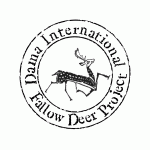 Staff Member: Dr Fiona Beglane. The project PI is Dr Naomi Sykes, University of Nottingham, UK. Funded by AHRC.
Staff Member: Dr Fiona Beglane. The project PI is Dr Naomi Sykes, University of Nottingham, UK. Funded by AHRC.
Of all the world’s deer none has a closer relationship to people than the European Fallow Deer (Dama dama dama). Ever since the Neolithic, humans have selectively transported and maintained this elegant animal, taking it from its restricted native range in the eastern Mediterranean across Europe where it is now an established icon of stately homes. Wherever fallow deer have been introduced they have altered the physical and psychological landscape and their distribution is a direct record of human migration, trade, behaviour and worldview. To realise this research potential the AHRC is funding a major international project that will employ methods proven by our pilot study – e.g. the integration of archaeology, history, geography and anthropology with genetics, stable isotope analysis and osteological research to examine the circumstances and cultural significance of this species’ diffusion across Europe. Fiona Beglane is the regional specialist for Ireland and a member of the international steering committee. See the project website.
Irish Meat Trade and Animal Husbandry in the Development of the Transatlantic Fishery: Integrating Archaeozoology and Stable Isotope Approaches
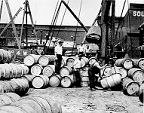 Staff Member: Dr Fiona Beglane. The project PI is Eric Guiry, University of British Columbia. Funded by the Dobbin Scholarship and by the University of British Columbia.
Staff Member: Dr Fiona Beglane. The project PI is Eric Guiry, University of British Columbia. Funded by the Dobbin Scholarship and by the University of British Columbia.
This project will develop and apply a novel isotopic approach for understanding meat-trade and provisioning practices among Irish and other European communities involved in the North Atlantic fishery between the 17th and 19th centuries. The project’s aims are twofold. 1) Provide a world class comprehensive isotopic data set for the interpretation of trends in Irish medieval and postmedieval animal husbandry practices and baseline information for future isotopic analyses of human diet in Ireland. 2) Enhance our understanding of the organization of early commercialized fisheries and the lifeways of Irish people who participated in them.
The Application of Geometric Morphometrics to Zooarchaeological Specimens.
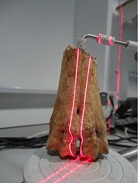 Staff Member: Dr Fiona Beglane (PI). Postgraduate researcher: Rita Mhig Fhionnghaile. Collaborator: Dr Olga Nanova, Zoological Museum, M.V.Lomonosov Moscow State University (Co-Investigator). Funded by IT Sligo Research Capacity Building Fund and an IRC Scholarship for post-graduate study.
Staff Member: Dr Fiona Beglane (PI). Postgraduate researcher: Rita Mhig Fhionnghaile. Collaborator: Dr Olga Nanova, Zoological Museum, M.V.Lomonosov Moscow State University (Co-Investigator). Funded by IT Sligo Research Capacity Building Fund and an IRC Scholarship for post-graduate study.
Throughout human history domesticated animals were used for a variety of purposes including cattle for milk, meat, leather and labour; sheep for meat, milk and wool; and pigs for meat and leather. The morphology or shape of animal bones preserves different biological information in an organism including sex, size, stature, diet, behavioural factors and evolutionary development. Since the process of animal domestication began, the morphological changes in animals took place mostly as a response to human interference with animals. These variations can serve as signatures of animal husbandry, selective breeding and sexual dimorphism and shed light on subsistence techniques, animal domestication, exchange and trade relationships, social status, ethnicity, cultural preferences and the ceremonial use of animals. For this project, geometric morphometrics is being applied to animal bone samples recovered from archaeological excavations from the Early Medieval through to the Post-Medieval periods, The focus of the project has been mainly on cattle, with some work carried out on fallow deer.
.
Analytical approaches to archaeology
The characterization and classification of archaeological glass samples using multi-elemental analysis
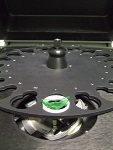 Staff members: Dr Fiona Beglane (co-PI), Dr Carmel Moran (co-PI). Postgraduate researcher: Sinead Middleton. Funded by an IT Sligo President’s Bursary Award for post-graduate study.
Staff members: Dr Fiona Beglane (co-PI), Dr Carmel Moran (co-PI). Postgraduate researcher: Sinead Middleton. Funded by an IT Sligo President’s Bursary Award for post-graduate study.
Glass was a highly-valued commodity in past societies and analysis of it, when found in archaeological contexts, can provide important information on trading routes, economies, etc. Limited work has been carried out on the chemical analysis of glass artefacts in Ireland in comparison to metals and other materials. The aim of this project is to chemically examine archaeological glass to ascertain its composition and to classify and provenance the samples based on their trace elemental analysis using Energy Dispersive X-ray Fluorescence (EDXRF) This provides a thorough and completely non-destructive multi-elemental analysis of samples, which is highly desirable for archaeological artefacts. The results from this project will lead to the development of a database outlining the composition and type of archaeological glass from which future analytical work with glass can be compared.
Multi-elemental analysis of soil samples from a Medieval site in County Roscommon
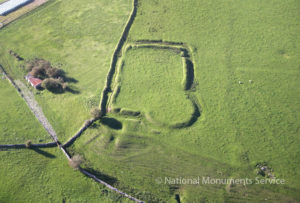
Carns Moated Site/Rath, Co. Roscommon, Ireland
SMR RO028-130002
Staff members: Dr. Carmel Moran (co-PI), Chris Read (co-PI). Postgraduate researcher: Mícheál Ó Cearbhalláin. Funded by Discovery Programme and IT Sligo Capacity Building Fund.
The aim of this project is to develop a baseline study using a Late-Medieval moated site which incorporates a ringfort at Carns, Co. Roscommon to determine, through analytical chemistry, what types of activities were practiced there. Besides identifying the actual elemental soil compositions, it is hoped that the role and value of soil geochemistry will be evaluated within the wider archaeological context. Since multi-element analysis is now possible from a single sample, multiple samples taken from specific points on a plotted grid on the chosen site should deliver precise information on settlement activities. To this point in time, these prospection techniques have been little used in Irish archaeological contexts and this project should help evaluate their value to and efficacy for the archaeological community.
Amber in Irish prehistory: a scientific, cultural and social investigation
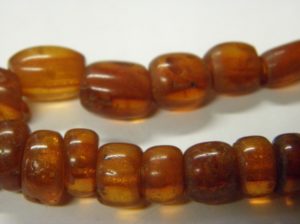
Staff members: Dr Marion Dowd (co-PI) Ms Maria Keeney(co-PI). Postgraduate researcher: Lisa Moloney. Funded by IT Sligo President’s Bursary Award.
The aims of the project are to: 1. Determine the provenance of amber recovered from prehistoric contexts in Ireland 2. Assess the quantities and contexts of amber artefacts in prehistoric Ireland. 3. Investigate the cultural and social significance of amber in Irish prehistory. A non-destructive scientific analytical technique attenuated total-reflectance-Fourier-transform Infrared spectroscopy (ATR-FTIR) was used to determine the source of 156 amber beads and fragments from Irish prehistoric contexts. Of these, 89 were found to have originated in the Baltic Region. These results provide a solid foundation on which to build interpretations regarding social and cultural aspects of life in Irish later prehistory, such as trade, exchange and communication networks.